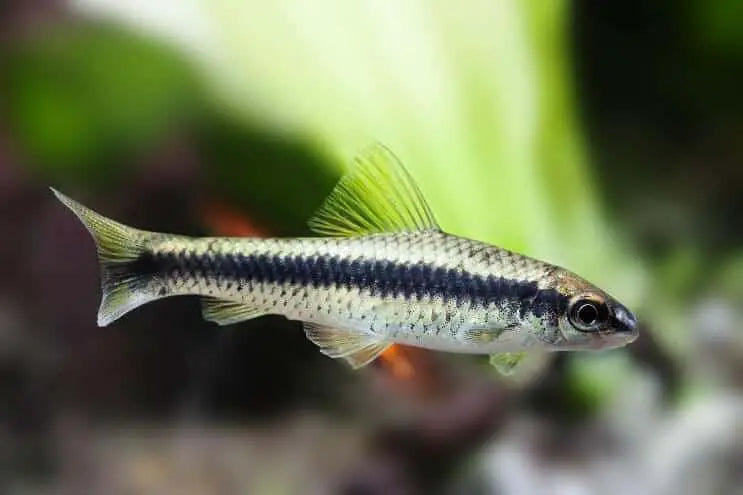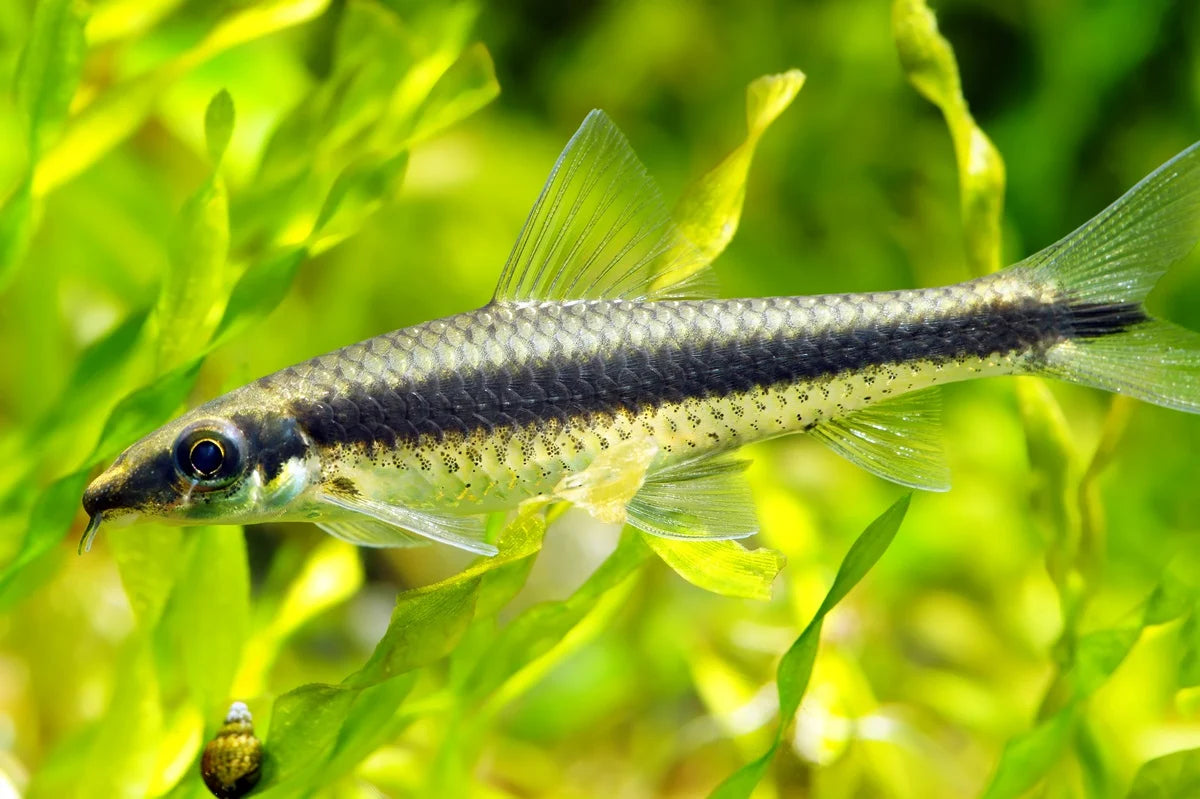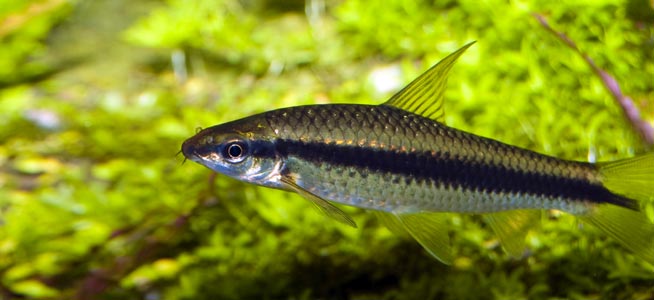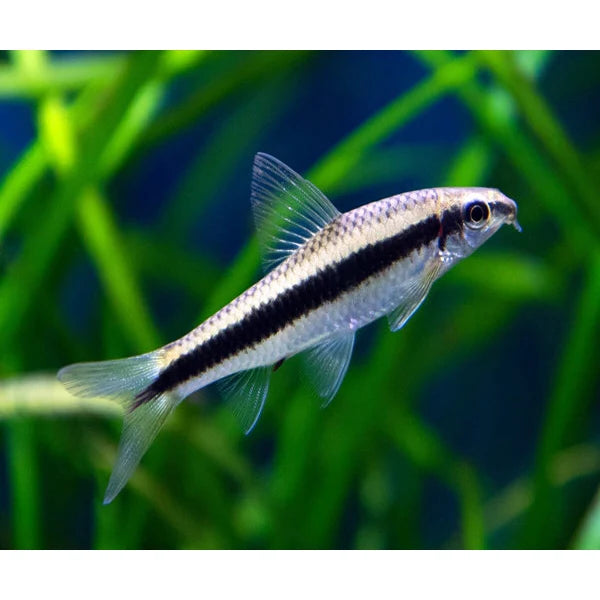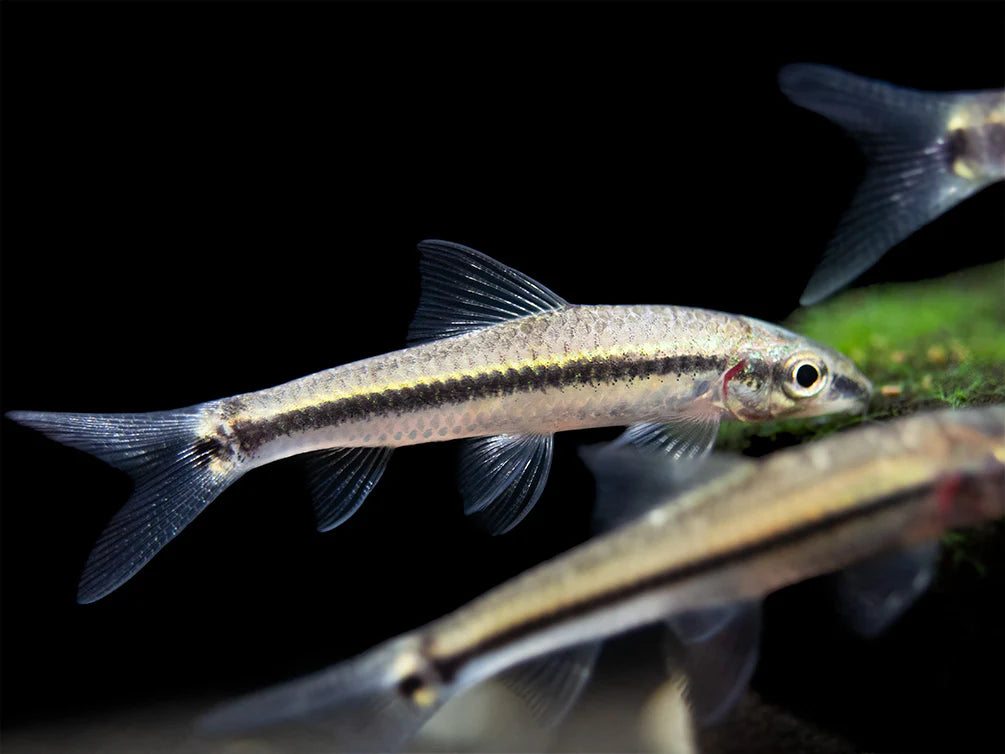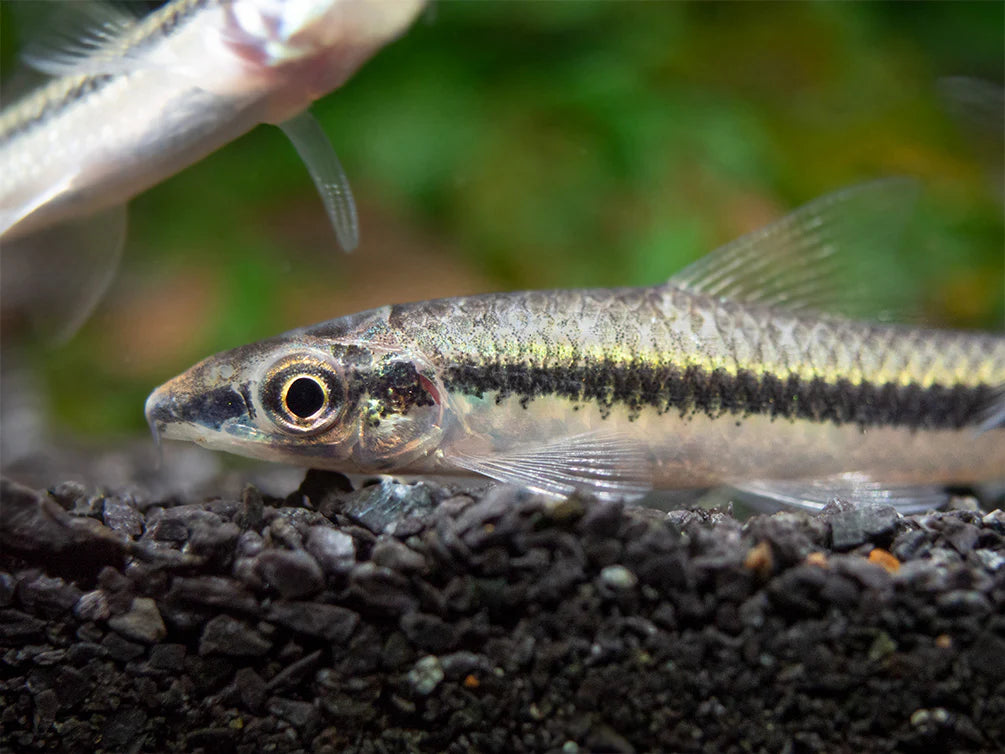Flying Fox Algae Eater (Epalzeorhynchos kalopterus) - Live Fish
Flying Fox Algae Eater (Epalzeorhynchos kalopterus) - Live Fish
The Flying Fox Catfish (Epalzeorhynchos kalopterus), often simply called the Flying Fox, is a popular freshwater fish in the aquarium hobby, known for its distinctive appearance and behavior. Despite its name, it's not actually a "catfish" in the traditional sense, as it belongs to the Cyprinid family, but it shares some similar features with catfish species.
Key Characteristics:
-
Size: Flying Fox Catfish typically grow to about 4-6 inches (10-15 cm) in length, though some individuals may grow slightly larger in optimal conditions.
-
Appearance:
- They have a long, streamlined body with a striking color pattern. The body is generally greenish-yellow or gold, with a distinctive black horizontal stripe running from their nose to the tail. This stripe is their most defining feature.
- Their fins are generally transparent with a slight reddish or orange hue.
- They have small, round mouths and long, sharp barbels (whiskers), typical of fish in the cyprinid family.
-
Lifespan: In a well-maintained aquarium, Flying Fox Catfish can live for around 5 to 10 years.
Behavior and Temperament:
-
Active and Social: Flying Fox Catfish are quite active and will often be seen swimming throughout the tank, especially during the day. They are a peaceful species and do well in community tanks with other similarly sized, non-aggressive fish.
-
Nocturnal Feeding: While they are generally active during the day, Flying Fox Catfish often prefer to forage at night for algae and food, which is a characteristic shared with many other fish in the Cyprinid family.
-
Territorial Behavior: They can be somewhat territorial, especially during breeding or when space is limited, but generally, they are not overly aggressive toward other species.
-
Algae Eaters: Flying Fox Catfish are algae-eaters, and they will spend a good portion of their time grazing on algae in the tank. This makes them useful in helping to keep algae under control, though they should not be relied upon entirely for algae management in the aquarium.
Habitat and Tank Requirements:
-
Origin: Flying Fox Catfish are native to Southeast Asia, including parts of Thailand, Malaysia, and Cambodia. They are typically found in slow-moving rivers, streams, and reservoirs, where they inhabit areas with plenty of aquatic plants and algae.
-
Water Parameters:
- Temperature: They thrive in temperatures between 72-79°F (22-26°C).
- pH: Flying Fox Catfish prefer slightly acidic to neutral water, with a pH range of 6.5 to 7.5.
- Hardness: They can tolerate a variety of water hardness levels, but soft to medium hard water is preferred.
-
Tank Setup:
- Flying Fox Catfish do well in tanks with plenty of aquatic plants and some rock or driftwood for hiding spots.
- They require open swimming space, but they also appreciate having places to retreat when they feel threatened or stressed.
- A gentle to moderate filtration is recommended to maintain water quality.
Diet:
-
Omnivorous: Flying Fox Catfish are omnivores, and while they will eat algae, they also enjoy a varied diet, including:
- Algae wafers and vegetables like zucchini, spinach, and peas.
- Live or frozen foods such as bloodworms, brine shrimp, and daphnia.
- High-quality flake or pellet food designed for omnivores.
While they help to control algae in the tank, they still need supplementary food to maintain a balanced diet.
Special Considerations:
-
Tankmates: Flying Fox Catfish are generally peaceful, but they may become territorial with other fish of similar size and temperament. It's best to keep them with peaceful species like small tetras, rasboras, and other non-aggressive fish.
-
Space: While they are relatively small, Flying Fox Catfish are active swimmers, so they benefit from having a larger tank with enough space to roam. A minimum of 30 gallons is recommended, though a larger tank will be better for their overall health and well-being.
-
Potential Confusion with Other Species: The Flying Fox is sometimes confused with a very similar species, the Siamese algae eater (Crossocheilus siamensis). Both species are used for algae control, but they have slight differences in their markings, and the Siamese algae eater is more commonly available for aquariums.
Conclusion:
The Flying Fox Catfish is a wonderful addition to a peaceful community tank, particularly for aquarists looking for an algae-eating species that is both attractive and functional. While they are not true "catfish," their peaceful nature, active behavior, and ability to help manage algae make them a desirable choice for many aquarium enthusiasts. Just be mindful of their territorial tendencies and ensure they have plenty of space and hiding spots.
Product features
Product features
Materials and care
Materials and care
Merchandising tips
Merchandising tips
Share

